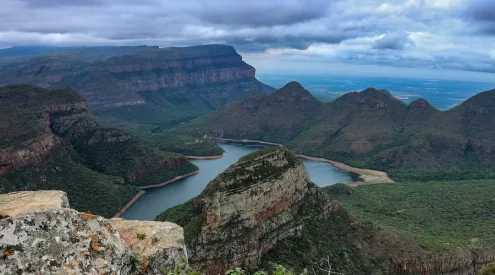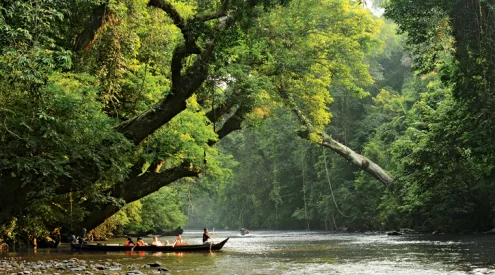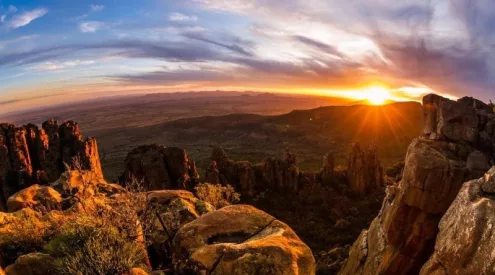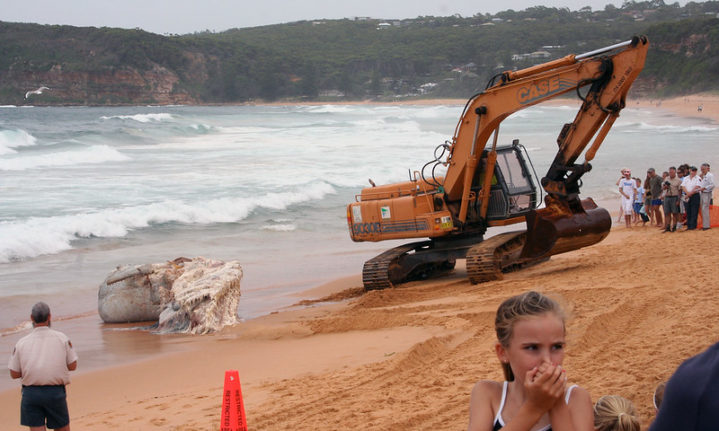Around 300 marine animals are beached annually in New Zealand, giving them one of the highest beached marine animals rates worldwide. These include several different animals, but long-finned pilot whales are beached most frequently.
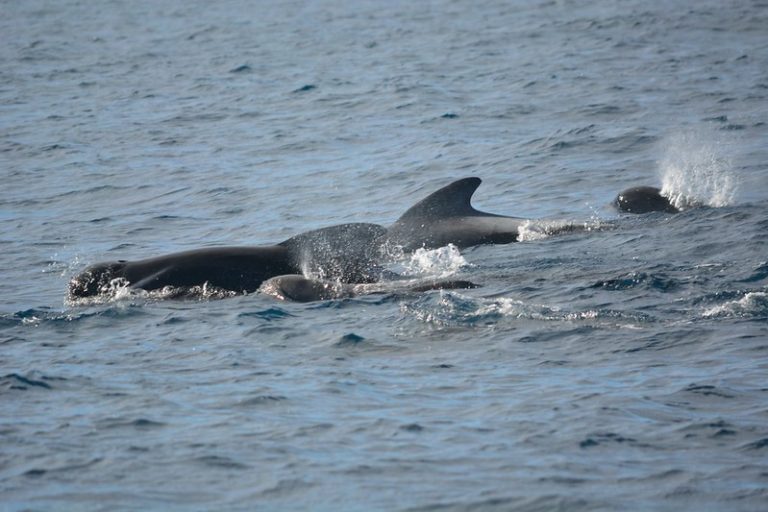
Despite their name, pilot whales are not actually whales. They are one of the largest members of the oceanic dolphin family, exceeded in size only by orcas, according to the NZ Department of Conservation.
The problem of mass strandings
Many beached whales are found to be malnourished, with their stomachs filled with plastic pollution. According to phys.org, this is one of the reasons whales become ill, confused and starving, resulting in them swimming ashore. When a pilot whale swims toward gently sloping beaches, it confuses their sonar and results in the whale thinking that they are in open waters. This has detrimental consequences not only to the beached whale but also to the pod it travels with, as its distress signals alert the other pod members, who in turn also beach themselves trying to respond.
This quickly becomes problematic and results in mass whale beachings. This problem is compounded by the fact that whale pods typically are comprised of 20 to 50 whales, and super pods can consist of even more whales. In addition, rescuing beached animals is a difficult task that not many people are equipped to do, resulting in mass deaths. Whilst this problem is particularly significant in pilot whales, it affects other whales too.
This is where Project Jonah comes in. It was established in 1974 with the aim of helping train New Zealand’s conservation and police department on how to respond when marine beachings occur, but Project Jonah can train anyone to become a ‘marine mammal medic.’ At present, the charity is comprised of over 4000 individuals, who can respond to mass beachings at any given moment.
How?
By using a giant rubber whale. A two-tonne rubber whale filled with water acts as a simulator for volunteers to practice what to do in the event of a whale beaching. The giant whale is accompanied by a smaller version – representing a dolphin – which the group tries to manoeuvre onto a mat between two inflatable pontoons, to successfully push it back out to sea.
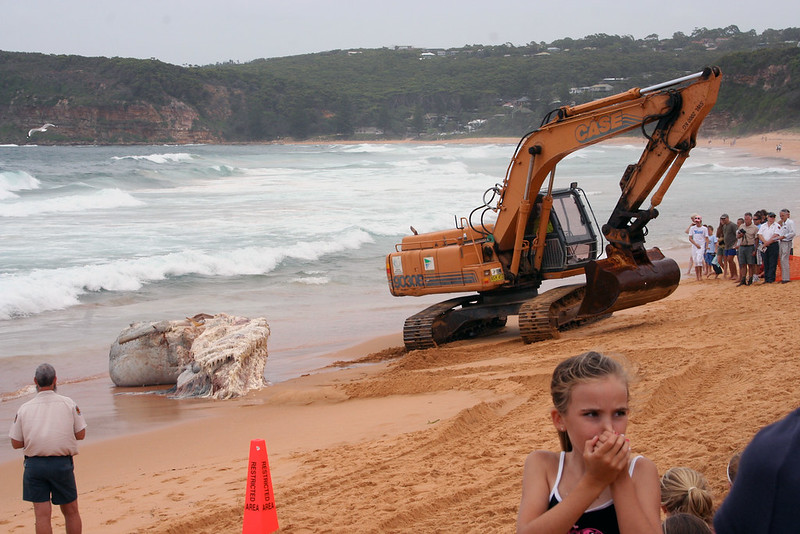
Beached whales are problematic to remove, and different tactics even including heavy machinery. Picture: Dylan Fogarty-MacDonald/Flickr Commons
However, the real deal is much more intimidating than the rubber dummy. Volunteers run the risk of being injured by thrashing animals. In addition, a whale’s blowhole expels bacteria and fungi, all of which poses significant health risks. These beached animals are also typically covered in blood, which attracts sharks. Dead whales pose an equal risk, as their bellies fill with gas as they decompose, which can cause them to explode.
Nonetheless, these giant rubber whales help train marine mammal medics in the best possible way to safely guide the beached animal back to sea.
Picture: Victoria Hoete-Dodd/Flickr Commons
ALSO READ
Study reveals potential solution to whale entanglements in South Africa


